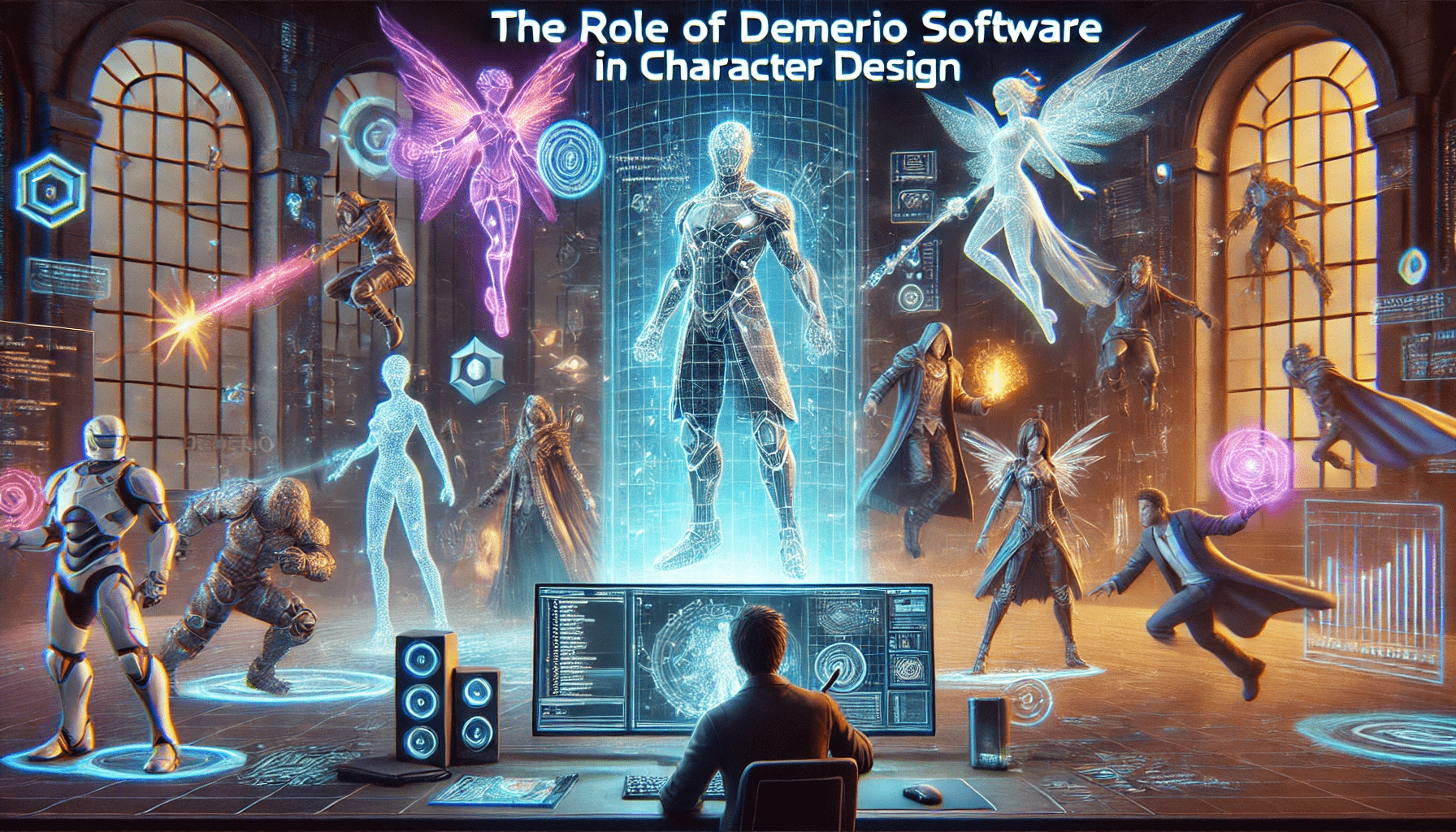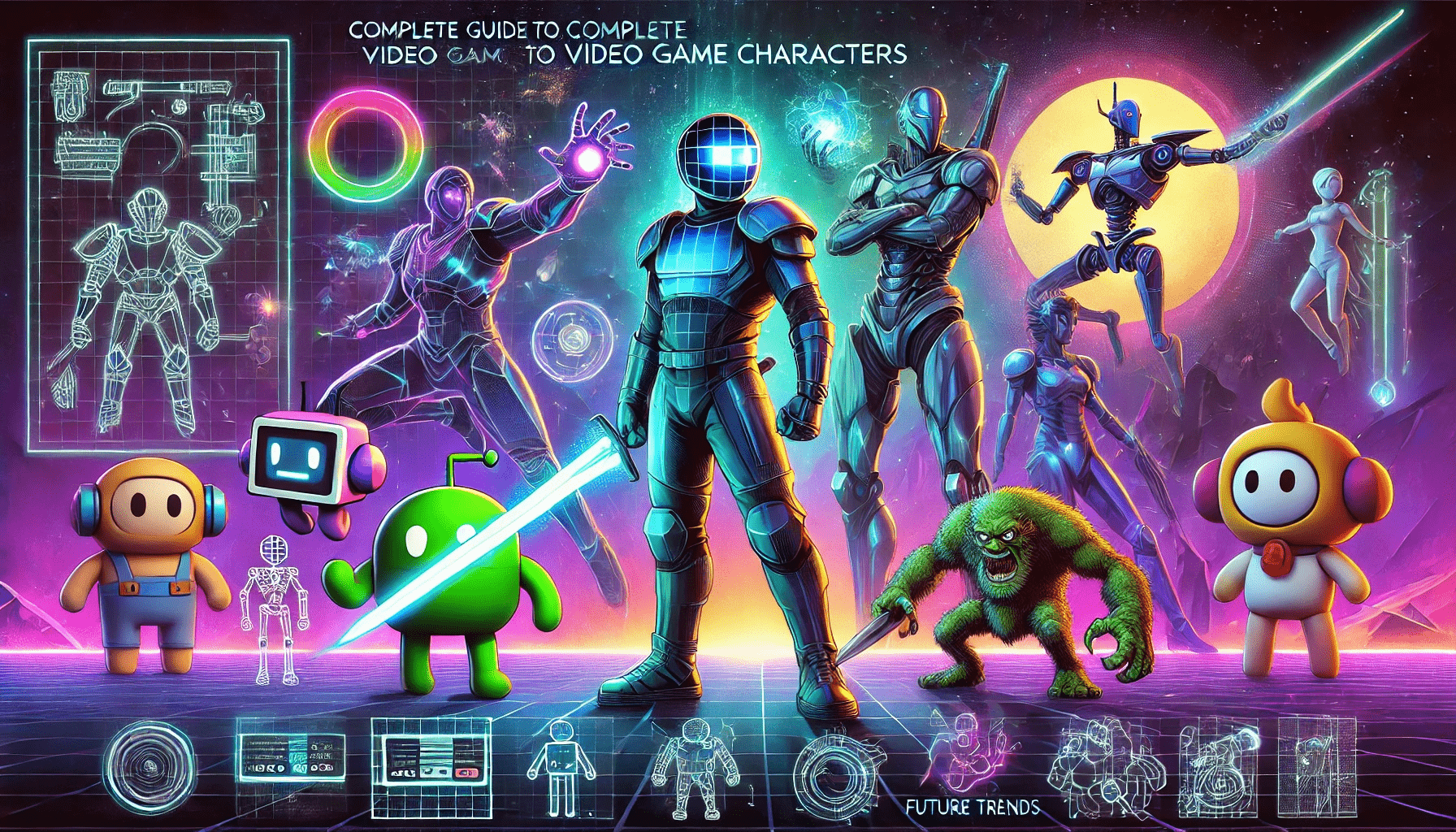Introduction
Video game characters are the backbone of any successful game. Whether it’s a fearless protagonist, a cunning villain, or a quirky sidekick, well-designed characters enhance storytelling and gameplay. This guide delves into the fundamentals of video game character design, exploring various types, the creative process, and how companies like Demerio Software are innovating in this space.
Importance of Video Game Characters
Why Do Video Game Characters Matter?
Characters shape the player’s experience, making them emotionally invested in the game. Memorable characters create lasting impressions and contribute to a game’s success. Key aspects include:
- Emotional Connection: Players form bonds with characters through their stories, struggles, and victories.
- Storytelling Mechanism: Characters drive the narrative forward, making the game more engaging.
- Gameplay Integration: Characters influence gameplay mechanics, such as combat styles, abilities, and progression systems.
Psychological Impact on Players
Game characters can impact players’ emotions and behaviors. Concepts like identification, projection, and agency play a significant role in how players connect with characters.
- Identification: Players see themselves in characters they relate to.
- Projection: Players live vicariously through the character’s journey.
- Empathy: Strong character development evokes emotional responses, strengthening immersion.
Types of Video Game Characters
Understanding different character types helps in designing immersive gaming experiences. Here are the primary categories:
1. Protagonists
The main playable character, typically the hero of the story. Examples include:
- Geralt of Rivia (The Witcher)
- Lara Croft (Tomb Raider)
- Mario (Super Mario series)
2. Antagonists
Villains or obstacles that challenge the protagonist. Notable examples:
- Sephiroth (Final Fantasy VII)
- Vaas Montenegro (Far Cry 3)
- GLaDOS (Portal)
3. Supporting Characters
NPCs or allies that assist the protagonist.
- Ellie (The Last of Us)
- Claptrap (Borderlands)
- Cortana (Halo)
4. Neutral/Side Characters
Characters that exist within the game world but don’t play a major role.
- Merchants (Resident Evil series)
- Villagers (Animal Crossing)
5. Customizable Characters
Games like The Sims, Cyberpunk 2077, and Elden Ring allow players to create unique avatars, enhancing personalization.
The Process of Designing Video Game Characters
Character creation requires a mix of creativity, storytelling, and technical skills. Here’s how game developers, including Demerio Software, approach it:
Step 1: Concept Development
- Define the character’s role in the game.
- Establish their motivations, personality, and background.
- Align design with the game’s theme and genre.
Step 2: Visual Design
- 2D vs. 3D: Decide whether the character is rendered in 2D sprites or 3D models.
- Color Palette & Costumes: Use colors that reflect personality and role.
- Proportions & Animation Style: Consider movement mechanics and combat interactions.
Step 3: Character Abilities & Mechanics
- Define skill sets, weapons, and powers.
- Ensure abilities align with gameplay mechanics.
- Balance strengths and weaknesses for fair play.
Step 4: Voice & Personality Development
- Choose voice actors or AI-generated voices.
- Develop catchphrases, dialogues, and unique speech patterns.
Step 5: Testing & Iteration
- Playtest character animations and interactions.
- Gather feedback for adjustments and refinements.
Step 6: Character Animation & Motion Capture
- Utilize motion capture for realistic movements.
- Implement dynamic animations based on in-game scenarios.
- Ensure smooth transitions between character actions.
Step 7: Integration into Game Environment
- Place characters in interactive settings.
- Optimize interactions with NPCs and objects.
- Refine AI-driven behaviors for lifelike interactions.
The Role of Demerio Software in Character Design

Demerio Software is a leading innovator in game development, specializing in AI-driven character creation and procedural animation. Their cutting-edge tools allow for:
- Automated character modeling using AI-based templates.
- Enhanced NPC behavior programming for dynamic interactions.
- Seamless integration with popular game engines like Unity and Unreal Engine.
Advanced Techniques in Character Design
Procedural Character Generation
This approach uses algorithms to generate characters dynamically, making every gaming experience unique.
- Used in Roguelike games for random character appearances.
- Ensures variety and unpredictability in gameplay.
AI-Driven Character Behavior
- AI enhances NPC intelligence, making interactions more realistic.
- Machine learning allows NPCs to adapt based on player actions.
- Examples: Red Dead Redemption 2’s NPCs and The Sims AI-driven behavior.
Realistic Facial & Motion Capture
- Cutting-edge technology records human facial expressions and body movements.
- Games like The Last of Us and Death Stranding have raised the bar in animation realism.
The Future of Video Game Characters
Hyper-Realistic Avatars
- Next-gen consoles support ultra-realistic character models.
- Ray tracing technology enhances lighting and textures.
Virtual Reality (VR) & Augmented Reality (AR) Characters
- Games like Half-Life: Alyx showcase how VR enhances immersion.
- AR characters will soon interact with real-world elements.
AI-Generated Characters
- AI tools will assist in automatic character creation and dialogue writing.
- Personalized gaming experiences tailored to individual players.
FAQs About Video Game Characters
1. What makes a video game character memorable?
A unique backstory, compelling personality, and well-designed visuals contribute to a character’s memorability.
2. How do developers balance character abilities?
By playtesting and refining mechanics to ensure fairness and challenge.
3. What role does AI play in character design?
AI helps in automating animations, procedural character generation, and improving NPC behaviors.
4. Why are customizable characters popular?
Customization enhances player immersion and personal investment in the game.
5. What’s the future of game character design?
The use of AI, motion capture, and procedural animation will drive the next wave of realistic and interactive character development.
6. How does Demerio Software improve game character design?
Demerio Software integrates AI-based modeling and dynamic animation tools, enhancing realism and efficiency in game development.
7. What are the key differences between indie and AAA game character design?
Indie games focus on unique art styles and innovative narratives, while AAA games emphasize high-end graphics and realism.
Conclusion
Video game characters are an essential component of immersive storytelling and gameplay. From designing protagonists to leveraging AI-driven innovations like Demerio Software, the evolution of character creation continues to push the boundaries of gaming experiences.
If you’re looking to develop engaging characters for your game, consider leveraging cutting-edge game development solutions for better realism and interactivity.

